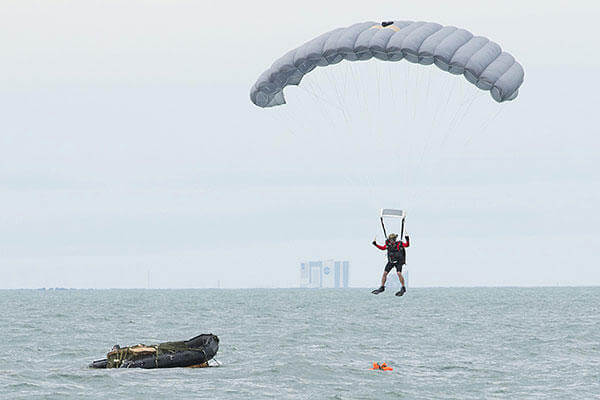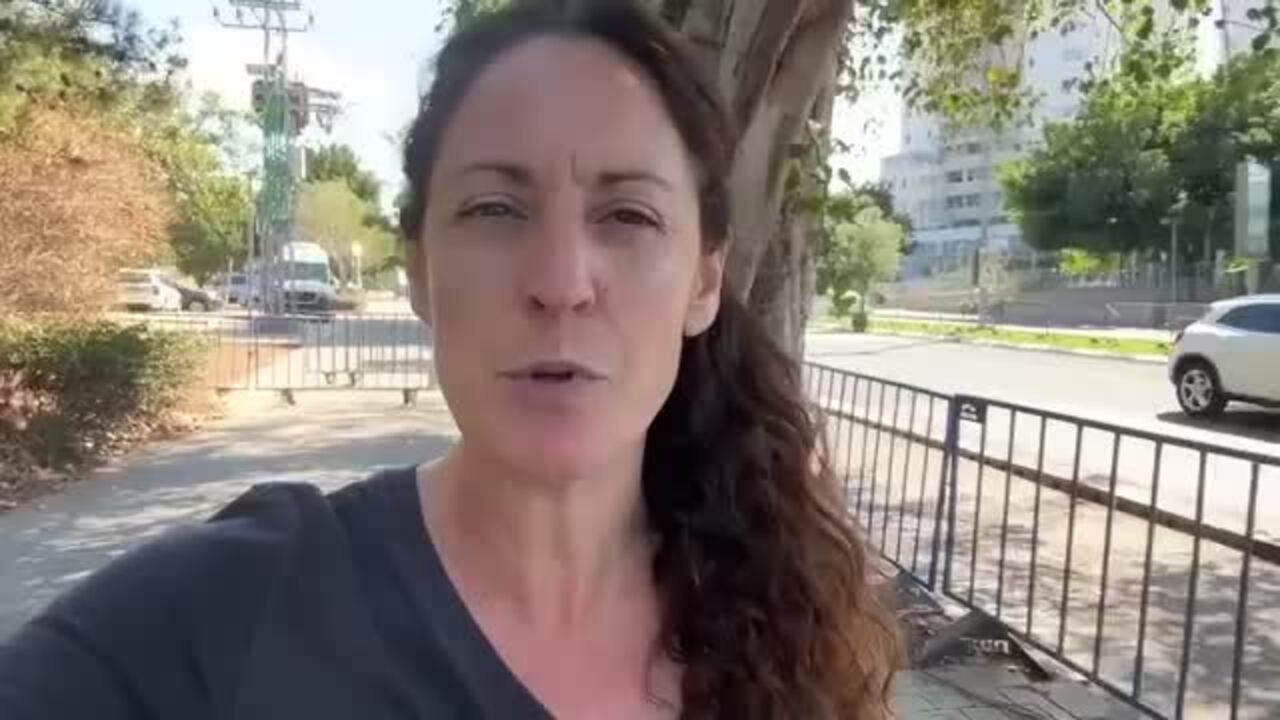PATRICK AIR FORCE BASE, Fla. — It's not common an astronaut must be rescued out of rough open waters after descending home to Earth in a crewed capsule. But when those space race-era days of human space flight return, a small Air Force detachment knows they will be ready.
The 45th Operations Group’s Detachment 3 joined NASA's Commercial Crew Program; Air Force pararescuemen; combat rescue officers; and survival, evasion, resistance and escape specialists in a simulated astronaut rescue at Patrick Air Force Base Jan. 14.
"At the strategic and operational levels of this exercise, we flawlessly met our objectives of effective command and control between our Joint Space Operations Center operating location and the combined Department of Defense and NASA landing support officers for the aircraft launch, relay of mission execution status, relay of astronaut medical status, and systems matter expertise to all players," said Lt. Col. Jason Havel of Det. 3, which is also known as the Human Space Flight Support Office. "The command and control was exercised in accordance with U.S. Strategic Command and Det. 3's concept of operations previously developed during their 2015 war game scenarios."
It was a total force effort involving Air Force active duty, Reserve and Guard personnel alongside NASA. The 308th Rescue Squadron, a Reserve unit known as the Guardian Angel Squadron based at Patrick AFB, provided a majority of the jumpers, and the Alaska Air National Guard's 249th Airlift Squadron coordinated the rescue jumpmaster training.
The Air Force and NASA teams boarded two Alaska ANG C-17 Globemaster IIIs with pararescue teams rigged for an open water jump mission on a course set for 10 miles off shore at a designated drop zone in the Atlantic Ocean. There, they met up with the life raft representing the space capsule where a simulated downed astronaut would be found after splash down. Four survivors were immediately recovered using life-saving medical care.
The ability to abort from any phase of a mission and safely remove astronauts from harm's way is a critical element for next generation of commercial crew spacecraft, according to NASA. Although very unlikely, aborts can occur during all phases of flight and a capsule could land almost anywhere in the world. So, the Ground and Mission Operations Office of NASA's Commercial Crew Program is working with the DOD to ensure rescue and medical personnel can recover astronauts quickly and safely in the event of such an abort.
"Exercises like this are extremely important to the development of tactics, techniques and procedures for the DOD forces as well as practicing and refining communication protocols between the flight crew and ground support teams, both NASA and DOD," said Tim O'Brien, who works for NASA's GMO Office. "While Air Force Reserve pararescuemen jumped from the C-17 aircraft and practiced their hands-on skills, real-time coordination took place between those rescue forces, a simulated flight crew, the aircraft, and NASA/DOD command centers in order to execute a safe rescue scenario. Every time we conduct an exercise like this, we learn and improve of our processes."
NASA recovery engineers and members of Det. 3 were aboard the life raft acting as astronauts communicating with the aircraft and the 308th RQS with a PRC-112G radio. One of the objectives of the rescue mission was to test the range of an essential line of communication between all parties.
At the heart of this vital line was the Det. 3 operations center located at Patrick AFB, thousands of feet below and 40 miles to shore. Members of the unique detachment proved their capability to transmit messages to and from the boat and the C-17.
The detachment specifically wanted to test their text and data transmission capability.
"Together with exercise participants, we developed tactics, techniques and procedures that incorporate the DOD-standard Quickdraw radio interrogator onto C-17A operations when used as a rescue platform," Havel said. "The Quickdraw (aircraft) and PRC-112G (survivor) radio combination gave us immediate position and identification more quickly and accurately than traditional voice relay.”
Prior to the execution of the mission, Det. 3 developed a nine-line medevac checklist with the NASA Health and Medical Division specific to the simulated astronaut rescue operation. They anticipate the checklist will become a standard item astronauts will train to use during contingencies. It has already been submitted to NASA's Flight Operations Directorate in hopes of becoming the benchmark for human spaceflight scheduled to return to America in 2017.
The small Air Force detachment has served as the liaison between NASA's Johnson Space Center in Houston, the Air Force and DOD for more than 55 years of training men and women of those organizations for launch contingencies and astronaut recovery.
Related video:
![]()

























